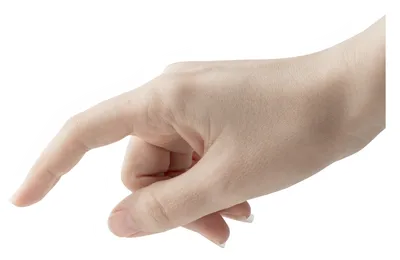want some cookies?
We use cookies to make your browsing experience amazing

So, you may be asking yourself well what are the 7 P’s of Marketing and why do I need to know them? The seven P’s (also known as the marketing mix) are the pillars of any and all marketing strategies. And they are: Price, Product, Place, Promotion, People, Process, and Physical Evidence.
These pillars are an essential part of marketing strategy and planning and will help you consider all essential areas before launching a marketing initiative to ensure success. (Well, as much as possible!)
But what has this got to do with learning? Well by using this framework you can better understand your learning product, your value proposition and ultimately answer the all important “what is in it for me?” question. Which boils down to one thing, you can market your learning more effectively!
Right now this may seem like a lot. You might be thinking this is 7 extra things to think about, on top of everything else. But don’t worry it’s easier than it sounds and I am going to break it down into how you can use each of these pillars in your learning function.
PRODUCT
This ultimately is what you are ‘selling’ to your audience. The best way to understand this is to ask yourself these 7 questions:
What do your audience want from learning?
What features does your learning require to meet these needs?
How and where will learning be used/undertaken?
What do your learning experiences look like?
How is your learning branded?
What’s it called?
How does it differ from competitors?
Once you have answered these questions you will have a clearer understanding of the exact product you’re trying to ‘sell’ and this allows you to position your marketing strategy in a way that will make sure you stand out from the noise your audience are battling with every day.
PRICE
Next up is price. Yes there is a price associated with learning, even if this is just your audience's time! I want you to consider what your learning is going to cost your audience? And does what they are investing marry up to the value you’re offering? This is extremely important as the time your audience is investing in your learning must meet the value that you’re providing them as otherwise they may turn elsewhere — or y’know, stop learning altogether! — and we definitely don’t want that!
It’s a good idea here to evaluate the offer and quality of your learning offering before diving head-first into your marketing strategy. Because you can’t out-market a bad learning experience!
PLACE
Have you ever realised that ads pop up at the perfect time and place just for you? And I’m not just talking about the clever remarketing adverts, I’m talking about the ads you see on the tube, on social media, in your local cafe. It's almost as if these advertisers know exactly where you will be. And, the truth is, they kinda do. This is because they have invested time & research into understanding their audience, so that their targeting is spot on.
We need to mimic this when marketing our learning content. If your audience is chilling in the office kitchen… put a poster up there. Browsing your intranet… stick a banner ad there. Go TO your audience, to grab attention and stay front of mind. This will keep them thinking about your offering at every given moment — making it much easier for them to take action, when the time comes
PROMOTION
Promotion is the area of marketing that you’ll likely be most familiar with. And it’s all about how we are going to get your audience's attention. What can we do to excite them and get their butts moving?
To determine the best channels and tactics for your audience, consider these 4 questions:
What channels do you have at your disposal?
How can you differentiate your offering from competitors? (And remember, this isn’t just other learning opportunities… ol’ Netflix is your competitor too!)
What messaging will you use? What emotions will you evoke?
Where are you most likely to get the most impact?
This goes hand in hand with creating customer personas and Han has a great blog post on this too, so it's definitely worth a read.
PEOPLE
Ask yourself, what influence do people have on the uptake of learning in your organisation?
Leaders. Managers. The C-suite. Colleagues. YOU.
People are at the heart of everything we do in L&D. So you must consider how that impacts marketing your offering. How can you utilise people to amplify your message? Your audience (cough… learners!) can also act as brand ambassadors and help spread the message of what you’re doing and generate positive feedback to influence the success of your offering. Hey, that’s the exact premise of Hubspot’s flywheel approach… and if it works for them, it works for us!
PROCESS
Learning isn’t transactional, is it? We want them coming back to us time and time again. So we have to build long-term relationships with our people. And to do that, we have to put ourselves in their shoes, and consider their entire decision making process, from the first point of awareness all the way through to advocacy.
A great way to do this is by using the AIDAL model. The AIDAL model is a representation of your audience’s journey, going from Awareness, to Interest, Desire, Action and ultimately, to Loyalty. Using this model, you must consider what your audience is doing, thinking and feeling at each stage. It’s only after doing this exercise can you identify your key touch points throughout, channels you can use to engage them, and any improvements you can make.
Put yourself in the position of your audience! Remember they do come first.
PHYSICAL EVIDENCE
Yes, your physical presence has an impact too! And even if you have an online-only offering, you have to still consider this. Picture this, you’re walking along your local high street and you see a messy restaurant, you wouldn’t anticipate great food, would you? The same goes for when people turn up to your training or your online platform. If it looks like it’s still operating on Windows 98, your audience will switch off. If your facilitator looks bored, your audience will switch off. If the programme feels thrown together, your audience will switch off. You could have the best learning experience known to man - but if your ‘physical’ appearance is falling short, you’re letting yourself down. We all know that appearances matters, so consider what physical evidence you have on the uptake of your learning too!
So what are you waiting for? Now you know the 7P’s of Marketing for Learning and the importance of utilising all of them. So surely it's time to get looking at your offering to see if you are meeting all the key points, right? Let us know how you get on!










